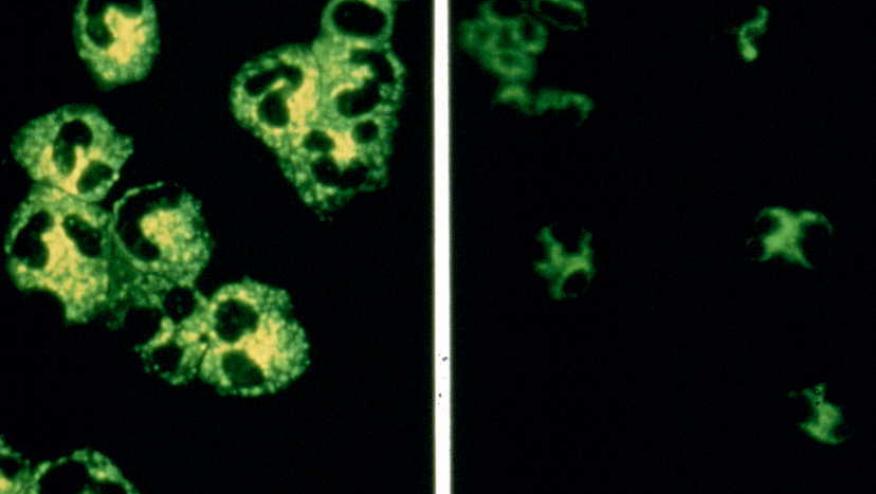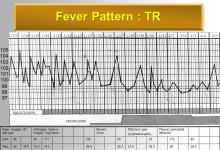Avacopan for ANCA Vasculitis Goes in Front of the FDA Save

An FDA advisory panel will consider whether to recommend approval of an oral C5a inhibitor for antineutrophil cytoplasmic antibody (ANCA)-associated vasculitis, with agency staff raising questions over the "clinical meaningfulness" of key study data.
On Thursday, the FDA's Arthritis Advisory Committee will discuss the application for avacopan in ANCA-associated vasculitis, an umbrella term for a group of small and medium-sized vasculitides associated with high morbidity and mortality. The two main subtypes of the disease being considered are granulomatosis with polyangiitis and microscopic polyangiitis.
In FDA briefing documents released ahead of the meeting, agency staff noted that the efficacy in the phase III trial supporting the potential approval was statistically significant, but that there were "uncertainties about the interpretability of these data and the clinical meaningfulness of these results."
The current standard of care for ANCA-associated vasculitis involves either rituximab (Rituxan) or cyclophosphamide plus prednisone until remission is achieved, followed by maintenance therapy with low-dose glucocorticoids and azathioprine, rituximab, methotrexate, or mycophenolate mofetil (CellCept) for at least 2 years. However, relapse is common and severe toxicities including the development of diabetes, osteoporosis, hypertension, and cataracts are associated with long-term use of glucocorticoids.
Avacopan is a small-molecule inhibitor of the C5a receptor. A key process in the pathogenesis of ANCA-associated vasculitis is activation of the alternative complement pathway, leading to terminal C5a production.
When data from a phase III pivotal study were recently published in the New England Journal of Medicine, the author of an accompanying editorial said the results of the trial had implications for the treatment of ANCA-associated vasculitis that were "previously unthinkable," being that remission might be successfully accomplished without the use of steroids.
Phase III Data
In support of its application, the sponsor, ChemoCentryx, provided the agency with data from the phase III ADVOCATE study as well as from two earlier phase II trials.
ADVOCATE enrolled 331 patients with granulomatosis with polyangiitis or microscopic polyangiitis, randomizing them to avacopan, 30 mg twice daily, or a 20-week prednisone taper, plus background rituximab or cyclophosphamide. Additional prednisone was given at the investigators' discretion to patients in both groups.
At week 26, a total of 72.3% of patients in the avacopan group and 70.1% of those in the prednisone-taper group had achieved remission, which was defined as a Birmingham Vasculitis Activity Score (BVAS) of zero. This represented a difference of 3.4 percentage points (95% CI -6 to 12.8), which was significant for noninferiority (P<0.001), though not for superiority (P=0.24), the researchers said.
However, by week 52, sustained remission was observed in 65.7% of those in the avacopan group and 54.9% of those in the prednisone-taper group, for a difference of 12.5 percentage points (95% CI 2.6 to 22.3, P<0.001 for noninferiority and P=0.007 for superiority), the investigators reported. In addition, the hazard ratio for relapse after remission was 0.46 (95% CI 0.25 to 0.84) for avacopan versus prednisone.
The committee will also consider the drug's safety. In ADVOCATE, serious adverse events not related to worsening vasculitis were reported in 37.3% of patients in the avacopan group and 39% of the prednisone group. Two patients in the avacopan group died, one from vasculitis worsening and a second from pneumonia, as did four in the prednisone group, from fungal infection, pleural effusion, myocardial infarction, and an unknown cause. Drug discontinuation because of hepatic abnormalities was seen in seven patients in the avacopan group and two in the prednisone group.
Among the points raised by FDA staff were that superiority for avacopan was not met at week 26: "In pre-submission communications, FDA stated that a noninferiority comparison would not be sufficient to show that avacopan can replace glucocorticoids as it would be difficult to establish whether avacopan is effective or whether rituximab/cyclophosphamide was the primary driver of the efficacy in both treatment arms," the document stated.
The agency also pointed out that 86% of patients in the avacopan arm were also given glucocorticoids during the first 26 weeks, for symptoms of vasculitis, adrenal insufficiency, and other conditions such as allergy or arthritis. The mean cumulative dose was lower in the avacopan group than in the prednisone group (1,072 mg vs 3,192 mg), but whether this reduction should be considered clinically meaningful was uncertain, according to the document.
A further concern was the difference in background therapies for remission (rituximab vs cyclophosphamide) and the use of maintenance therapies following remission (azathioprine after cyclophosphamide; none after rituximab).
Phase II Data
The phase II studies submitted were both 12-week trials. One enrolled 67 patients, randomizing them to prednisone alone, starting at 60 mg per day; avacopan, 30 mg twice daily, plus reduced-dose prednisone (20 mg per day); or avacopan alone. Clinical responses at week 12 were seen in 70% of patients receiving prednisone alone, 86.4% of those given avacopan plus lower-dose prednisone (P=0.002 for noninferiority), and 81% of the avacopan monotherapy group (P=0.01 for noninferiority).
The second phase II trial included 42 patients given standard-of-care treatment alone with cyclophosphamide or rituximab plus glucocorticoids, or standard of care plus 10 or 30 mg avacopan twice daily. High rates of BVAS 50% response were observed in all three arms, although this response was seen more frequently in the lower-dose avacopan group. Remission also was lower in the 30-mg avacopan group.
"Overall, the phase II data do not appear to provide support for the efficacy of avacopan over standard of care nor support for avacopan as a steroid-sparing agent," the briefing document stated.
Discussion and Questions
In conclusion, the agency wrote: "We acknowledge that ANCA-associated vasculitis is a rare and serious disease associated with high morbidity and increased mortality. It is also a disease with high unmet need for new therapies. However, FDA wants to ensure that new products have a defined context of use, i.e., how a product would be used, and a favorable benefit-risk assessment for patients."
Topics of discussion for the committee will include whether the 26-week data support a clinically meaningful benefit for avacopan, given the lack of superiority seen at that time point and the use of additional glucocorticoids, as well as whether the use of a primary noninferiority comparison was appropriate.
The committee will then discuss whether the 52-week data support a clinically meaningful benefit, in light of the fact that no maintenance therapy was given to the rituximab subgroup. Finally, the discussion will focus on whether the data support avacopan as a steroid-sparing therapy.
At the conclusion, the committee will vote on whether the efficacy and safety data support the approval of avacopan for the treatment of adults with ANCA-associated vasculitis, and whether the benefit-risk profile is adequate to support approval of the drug at the dosage of 30 mg twice daily.









If you are a health practitioner, you may Login/Register to comment.
Due to the nature of these comment forums, only health practitioners are allowed to comment at this time.